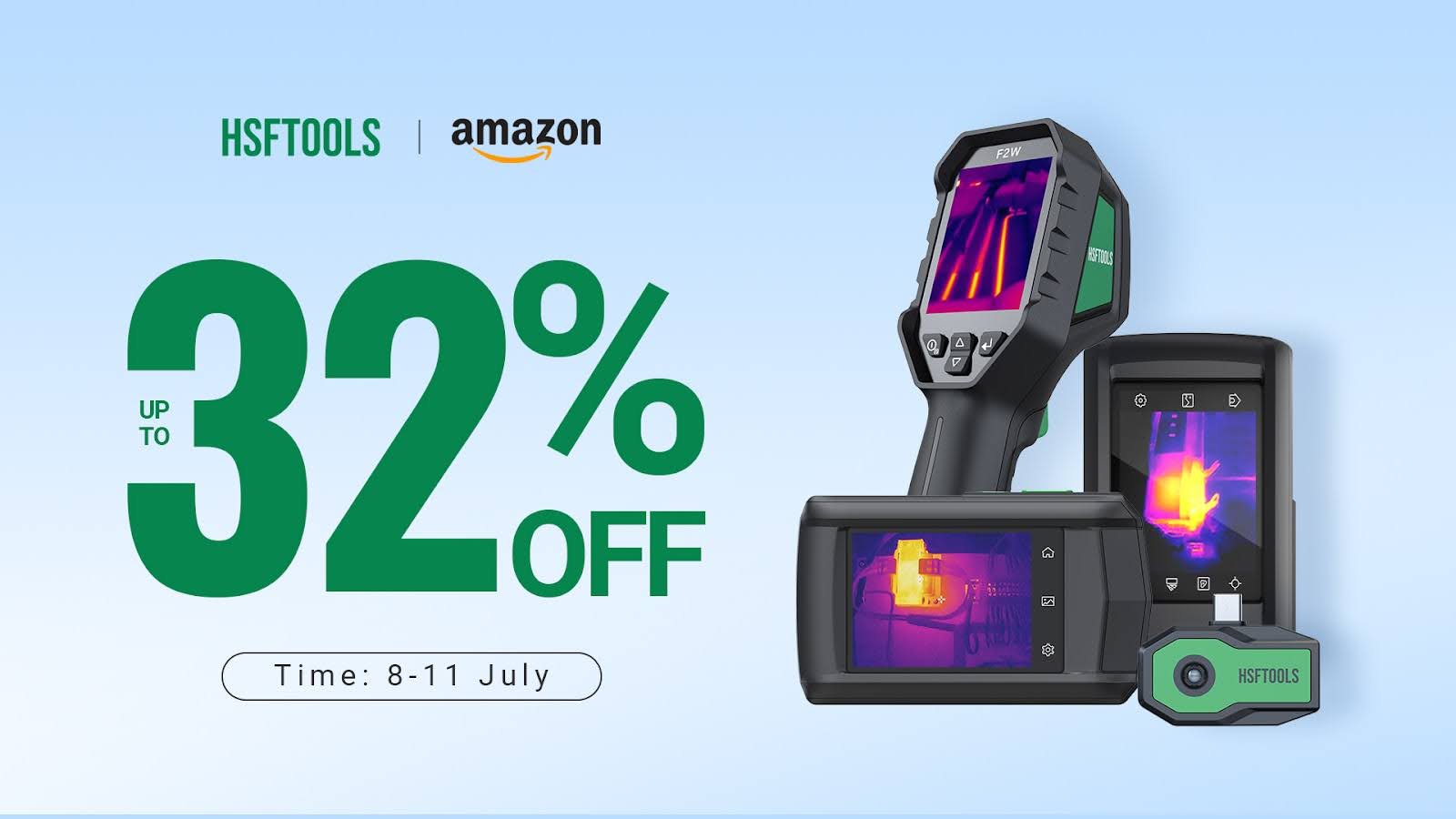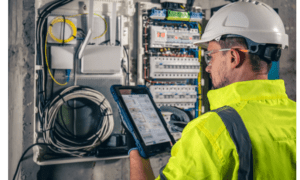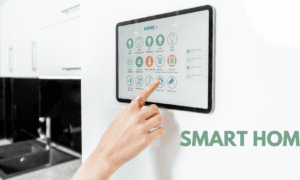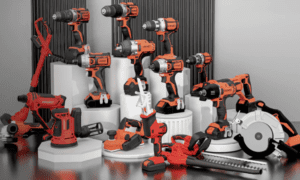HSFTOOLS is launching its largest discount campaign of the year in time for Prime Day, offering up to 32% off across its range of thermal cameras. The promotion includes discounts on the company’s full product lineup, which is designed to serve both professionals, such as plumbers, electricians, and home inspectors and first-time users who want to conduct home inspections or detect issues like water leaks and insulation problems.
Thermal imaging cameras are increasingly used for non-invasive inspection in residential and industrial settings. They help identify areas of energy loss, moisture intrusion, electrical faults, and HVAC inefficiencies. With rising repair costs and more homeowners choosing to do basic maintenance themselves, tools like thermal cameras are gaining popularity outside of professional trades.
The HSFTOOLS Prime Day campaign is intended to make thermal imaging more affordable and accessible to a wider group of users. The company says the discounts are available from July 8 to July 11 on Amazon and through its official website.
Product Range Covers Professional and DIY Use Cases
HSFTOOLS’s product lineup includes three main types of thermal imaging devices: handheld, pocket-sized, and smartphone-compatible cameras. Each is tailored to specific user needs and applications.
- For professional users, the 256 Series includes the F2W handheld camera, the P2W pocket camera, and the Finder S2 smartphone attachment. These models offer higher thermal resolution and sharper image quality, which are important for technical tasks such as predictive maintenance, building diagnostics, and utility inspections.
- For first-time or DIY users, the 96 Series includes the HP96 pocket thermal camera and the HF96V handheld model. These are intended for homeowners, renters, or maintenance personnel who are less familiar with thermal technology but want to perform basic inspections.
All models in the 96 Series include the company’s proprietary IntellFault™ algorithm, which helps users detect problems without needing to interpret complex heat maps. The software allows users to activate preset modes—such as “Water Leakage” or “Insulation”—that automatically highlight potential problem areas in real time.
“We built the IntellFault™ feature to assist users who may be unfamiliar with thermal imaging,” said Jule Sang, Marketing Director at HSFTOOLS. “With the mode on, users can point the camera and immediately get visual guidance on what areas might need attention.”
Pricing and Availability During Prime Day
As part of the Prime Day campaign, the company is offering discounts across its major product categories. These include:
- HF96V (96 Series, handheld): from $219.99 to $189.99
- HP96 (96 Series, pocket): from $269.99 to $189.99
- Finder S2 (256 Series, smartphone attachment): from $249.00 to $169.00
- F2W (256 Series, handheld): from $339.00 to $271.20
These price reductions place thermal imaging tools within reach of a broader audience. At under $100, the Finder S1 is among the most affordable options on the market, especially for Android phone users looking to add thermal capability to their device.
“We want people to view thermal cameras as standard tools, just like a stud finder or voltage tester,” Sang said. “They can be used in all kinds of inspections, some routine, some critical and we’re pricing them accordingly this Prime Day.”
Thermal Imaging as a Must-Have Tool for Home and Industry
Thermal cameras have traditionally been used in high-end industrial or scientific applications, but their role in residential maintenance has expanded significantly in recent years. In home environments, they are increasingly used for spotting water damage behind walls, identifying missing insulation, locating heating or cooling inefficiencies, and detecting electrical hotspots.
HSFTOOLS points to common use cases that apply to both homeowners and professionals:
- Water leak detection behind drywall, under flooring, or near pipes
- Insulation inspection to spot gaps in attics, walls, and windows
- HVAC maintenance, helping pinpoint airflow problems or refrigerant loss
- Electrical inspection to detect overloaded circuits or overheating panels
These functions, once requiring specialized tools or contractor visits, can now be done quickly with a thermal camera. For beginners, the addition of the IntellFault™ feature removes much of the guesswork, making thermal imaging more usable even without prior experience.



































